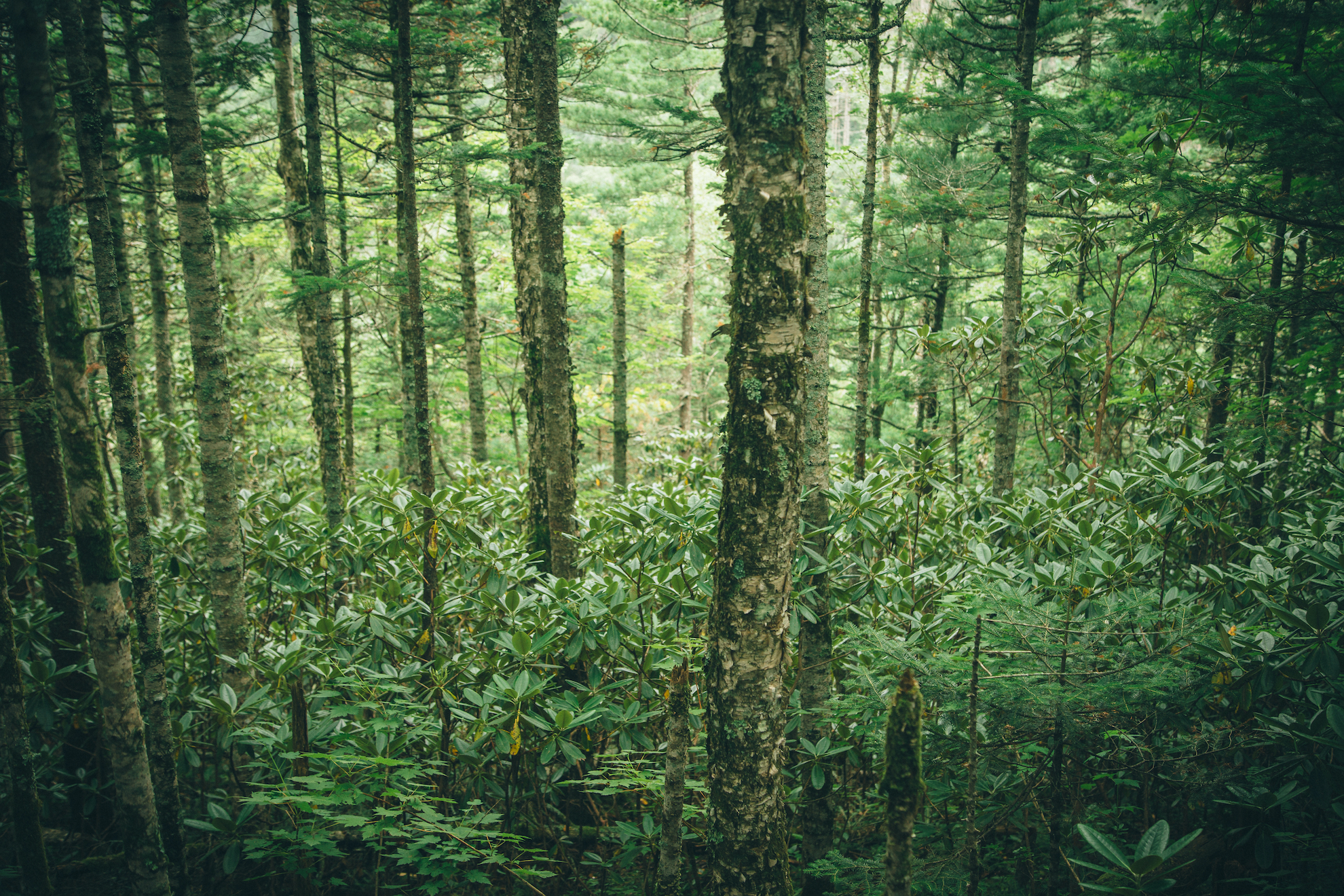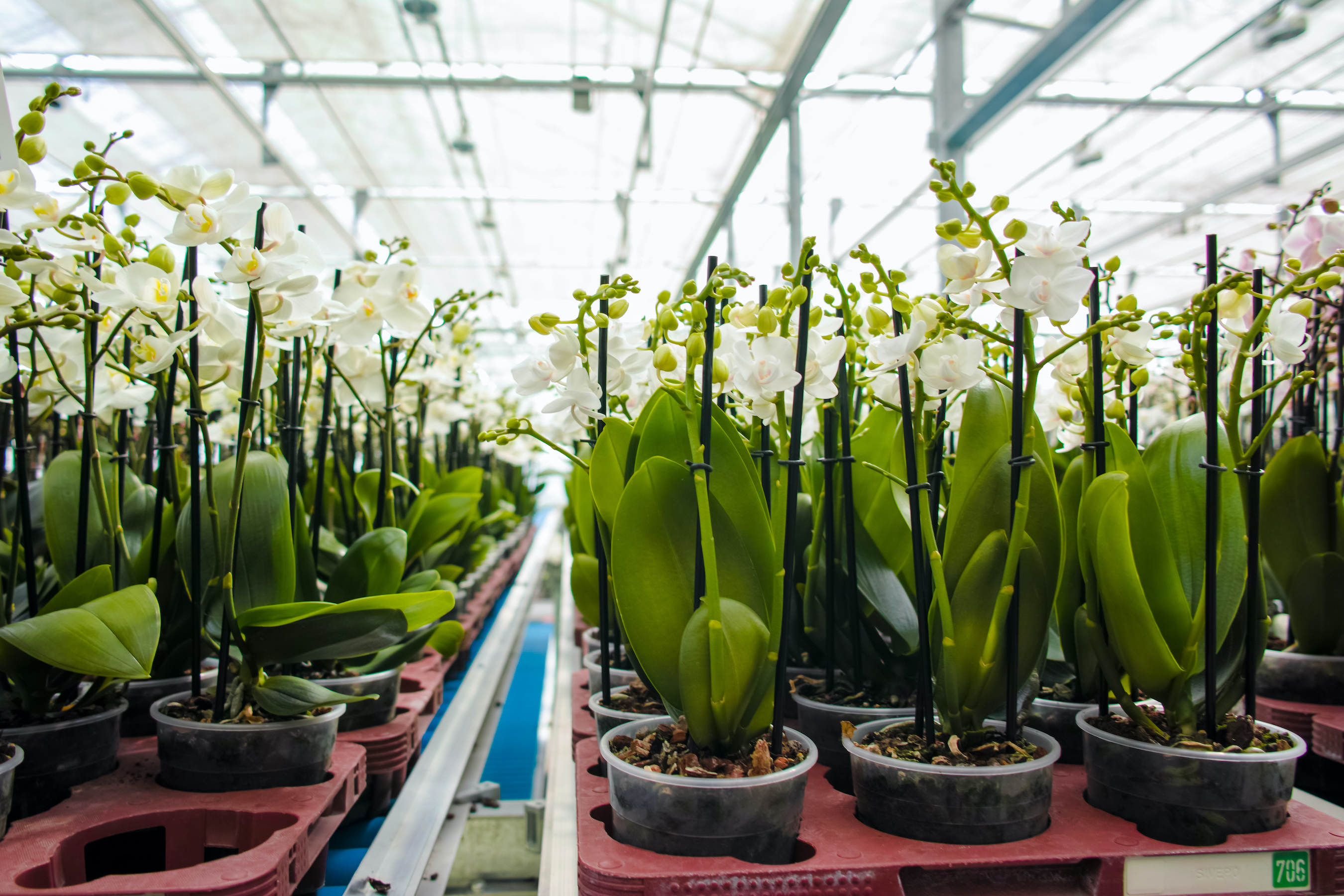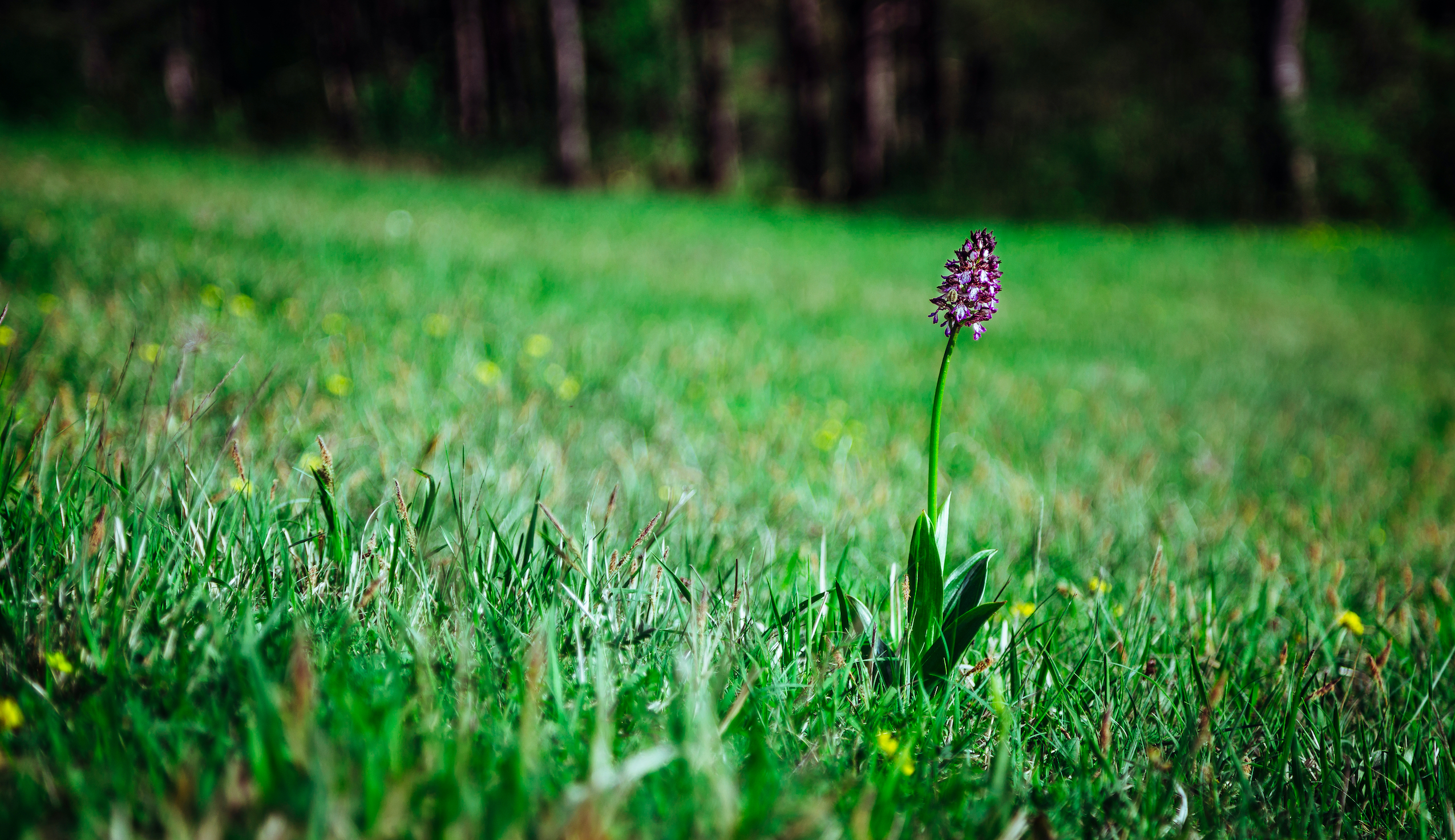If you ask anybody in the world what they think of when you say the word “wildlife”, most people would probably think of an animal of some kind. It might be a high-profile elephant or rhino, or something that they’ve seen nearby – in the UK, maybe a fox or a badger – but wildlife includes everything. It includes plants. It includes animals that you might not think of, like invertebrates. It includes fungi. What’s most interesting when you’re thinking about wildlife trade, wildlife use, is that the plants sometimes get ignored– and not just for wildlife trade, but for everything. So in conservation, plants are sometimes overlooked by researchers, by conservationists looking at which species need to be conserved, by funders and policy makers. So we need to think more about plants and their value to us, because everything we do is based on plants. We wouldn’t be alive if it wasn’t for plants. They provide oxygen, but they’re also, in terms of wildlife trade, integral to almost everything we do every day. Every one of us will have used a product based on plants: maybe a cosmetic product, definitely a food product, flavourings and spices. Brazil nuts come from wild trees in Brazil, and it’s so interesting when you’re thinking about wildlife use, trade and conservation more broadly to think about how much we all rely on plants and how much we just can’t ignore them.
Caring about plants and the global orchid trade
Senior Research Fellow
- In general, plants deserve greater consideration in conservation policy and practice than they currently receive.
- Historically, consumers and collectors have been obsessed with wild orchids, for aesthetic reasons and for natural medicines.
- Even if a farmed or synthetic alternative is available, there are no guarantees consumers will choose it.
Thinking more about plants

Photo by bravikvl
Unknown threats
If I try to visualise the threats to plants and how many of them might be threatened, it can be difficult, because we all see plants every day. We see trees everywhere around us. We use plants all the time as food. We might not consider that they might be threatened; sometimes we don’t know whether they’re threatened or not. The conservation community tries to assess threats to different species and look at the conservation status of different species using the IUCN Red List. As an example, every single bird species has been assessed by the IUCN Red List. So we know the threat status to every single bird species, but so few plants have been assessed that we don’t know what the threats are.
Orchids are the group I work on the most. There are around 29,000 species of orchids, which can be overwhelming in itself, but only around 4,000 orchid species have been assessed by the IUCN Red List. So we don’t know whether they’re threatened or, if they are threatened, what they’re threatened by. It can be difficult to communicate those threats to people because often we just don’t know, and that’s one big problem with anything that falls into these big groups, like plants or fungi, because we need to start talking about them on a species level and on an individual case basis, rather than talking about them more broadly. Because people can get lost amongst all of those different species and the complexity of them, sometimes you need to simplify things a bit more and talk about individual case studies.
Obsessed with orchids
Orchids are interesting as a case study for conservation and for trade. People have grown orchids for thousands of years for lots of different reasons. Orchids are used for medicine and food, but one of the most well-known uses – the one that I tend to study – is as an ornamental plant. People get so obsessed with orchids. It’s a bit like the tulip mania that some people might have heard of. Sometimes it’s called “orchid delirium”, which describes it perfectly, because for people who are obsessed with orchids, it’s almost like some kind of fever. It’s something that they can’t control. They want orchids so much, and they want rare species. They want new, exciting species so much that they will do almost anything to get them. There are some great examples from Victorian times, when British and European orchid collectors went out all over the world to try and get these new species and bring them back to the obsessive collectors of Victorian Britain and Europe. There are examples of orchid collectors going to huge lengths to get one species that would be incredibly valuable back in Europe. There are examples of orchid collectors burning down whole areas of forests just to make sure that no one else could ever collect that species again. There are examples of people killing each other and dying because they climbed a tree to get an amazing orchid. These are the types of lengths people will go to get these plants, and that was a couple hundred years ago – but now people are still as obsessed. It’s just they don’t need to go to such great lengths to get them anymore. Today, you can go on Facebook and buy a rare orchid. People love the rarity; they love showing them off to their friends.
Controlling wild species

Photo by barmalini
The legal and the illegal trade of orchids is really complex. They are intertwined. Often traders of legal orchids will also trade illegal orchids. There are some that just do illegal orchids, but often they’ll use the same trade chains and methods – and often, the same consumers will be buying both, and the same traders will be involved. There are great legal examples of orchid nurseries that go to great lengths to make sure everything they do is legal. I think what’s interesting about orchids is that there is an international convention: the Convention on the International Trade of Endangered Species of Wild Fauna and Flora, or CITES. CITES lists different species that are in trade or might be threatened by trade. It’s a way of monitoring and controlling the trade of wild species. Every single orchid species is listed on CITES; they make up more than 72% of the convention. It’s a convention that also includes tigers, primates and elephants. Often, those mammal species get the most discussion about illegal trade, but orchids are the majority of this international convention.
Illegal trade with rare species
People can collect orchids from the wild and sell them for not very much in a local market, or they can sell them for huge sums to people who are collectors, especially if it’s a rare species. These are great examples of how the legal and illegal trade can work alongside each other. They can be separate, but often illegal and illegal are quite difficult to define for lots of different wildlife, including for the orchid trade. If you harvest an orchid, it can sometimes be a legal thing to do, but if you sell it across an international border without permits, it becomes illegal, and it can be very complicated. The illegal trade, though, when it’s organised and focused on rare species, can be a threat to species in the wild.
There is a great example from Vietnam: Southeast Asian Slipper orchids, or the Paphiopedilum species. They are some of the most in-demand in trade, and they have some of the tightest international restrictions on their trade. You can’t trade any of them wild at all (it’s illegal to do that), but as soon as these species are discovered – and new species are discovered all the time – often there will be a huge effort of illegal collection where people will go in, find the field site where they’ve been discovered and collect all of the known plants before we even know what the species is. So, often, even before formal description, before it’s published in a scientific journal, every single one of these plants will have gone from the wild – and this is a huge challenge. Often the illegal trade does this one step ahead of everybody else. So we have to be careful when it comes to things like species descriptions and talking about where these plants are.
A farmed alternative?
Lots of different orchids are used in traditional medicines all over the world. Some of the most well-known examples are in traditional Chinese and Asian medicine, where many different species are used for different reasons. These can be cultivated: in China, for example, Gastrodia Elata, which is also known as Tianma, and lots of Dendrobium species. The cane of the Dendrobium plant is used as a medicine. Both of those types of orchids are grown in quite large quantities in China. So you can get widely available, relatively cheap, cultivated orchid medicines.
However, there are some concerns that people prefer wild versions of these species. In some cases, medicines that are made from wild alternatives are seen as maybe more potent, but also more natural and with fewer additives. It’s similar to people preferring to buy organic things. We have to understand that when we think about threats from trade, when we’re talking about things like medicine, just having an alternative available, a legal farmed alternative, doesn’t necessarily mean that people will always choose to use it.
They might have preferences for these wild plants or wild alternative medicines, and they might go out of their way to seek them out. However, that doesn’t always mean that they will end up buying them. If they have preferences for a wild, collected orchid, it doesn’t mean that they’re going to find it; if it’s an illegal product – if it’s very difficult to find and very, very expensive – the motivation for them to go out, find it and break the law can be a huge barrier to them translating those preferences into purchases, and often they will settle for a farmed alternative.
Importance to culture
In Turkey, Greece and the Middle East, there’s a product made from orchids called salep. It’s a food product made from the ground up tubers of lots of different terrestrial orchids. There isn’t a cultivated alternative available. There are various people trying to cultivate these plants, but they’re very slow and difficult to grow. So it’s much easier and cheaper for everybody to just go out and collect the wild orchids to make this product. In those cases, it’s difficult to know what to do because you could tell people not to use them anymore or to use an alternative. You can buy a synthetic alternative, for example, but people might not want to use a synthetic alternative. Also, you can’t always rule out the idea that they might go out and still try to find this wild collected alternative, especially if it’s something that’s important to their culture or traditions.
Orchid species could disappear

Photo by Max Ddos
One problem with the illegal orchid trade is that orchids are often very sensitive to changes in their environment, and they’re at risk anyway. So if we put extra pressure on them through legal or unsustainable trade, then it can mean that these orchid species could disappear in the wild, and there are lots of examples, like traditional medicines in Asia of orchids that have been used for hundreds, maybe even thousands, of years disappearing from the wild. You can see shifts from species that have always been used to very similar species because those original species aren’t available anymore in the wild. They’ve been collected completely. There are examples of whole populations of orchids being collected in one go in Southeast Asia. I know of several examples of illegal collectors who will go out and pick any plant that looks like an orchid in order to trade it. Those threats can be severe because once that population disappears, it could take a long time for it to come back naturally. We often don’t know enough about orchids’ ecology. Orchids grow in symbiosis with mycorrhizal fungi in the soil, and they also have very specific relationships with pollinators. So, once an orchid disappears or starts to decline, it’s hard to reintroduce it, because you have to consider all of these other ecological factors.
Discover more about
The illegal orchid trade
Hinsley, A., Lee, T. E., Harrison, J. R., & Roberts, D. L. (2016). Estimating the extent and structure of trade in horticultural orchids via social media. Conservation Biology, 30(5), 1038–1047.
Hinsley, A., De Boer, H. J., Fay, M. F., et al. (2018). A review of the trade in orchids and its implications for conservation. Botanical Journal of the Linnean Society, 186(4), 435–45.